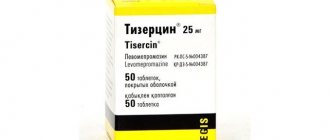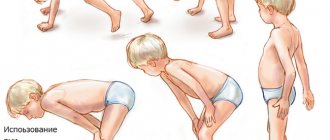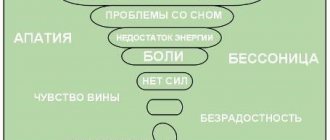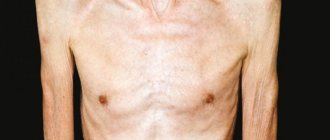Some people, under the influence of mental trauma and stress, experience disorders that manifest as mental problems. These deviations, varied in symptoms, are called reactive psychoses (RP) in psychiatry. Signs of disturbances can be short-term (up to a day) or long-term, lasting several months. Our mental health center “Leto” treats patients with this pathology. We provide them with the necessary level of attention, carry out diagnostics and individual therapy for the identified disease. If necessary, we provide consultation and support at home.
What provokes the development of reactive psychosis
Most often, RP manifests itself in situations that create life-threatening circumstances.
Psychiatrists identify the following reasons:
- Accidents and disasters.
- Natural disasters.
- Hostilities.
- Loss of loved ones.
- Financial desperate situations.
- Threats, psychophysical violence.
The severity of clinical manifestations of disorders depends on two factors:
- Features of the mental structure of the patient’s personality (character).
- The significance of the traumatic situation for a particular person.
Additional factors contribute to the development of reactive psychosis:
- Overwork.
- Insomnia.
- Traumatic brain injuries.
- Substance abuse.
- Transfer of severe infectious diseases and neurosomatic pathology.
The disease is especially severe in children and people entering menopause.
Reactive psychosis. Symptoms, causes and treatment
09.12.2019
Reactive psychosis is a temporary mental disorder that occurs against the background of severe emotional shock and psychological trauma. The most susceptible to the disease are people with a weak nervous system , emotionally unbalanced, who are characterized by hysterics and mood swings.
Depending on a person’s temperament, the characteristics of his psyche, the strength of the influence of the negative factor and the form of the disease, the symptoms of reactive psychosis can be completely different.
In the hyperkinetic form of the disorder, the patient experiences increased motor activity and psychomotor agitation.
The hypokinetic form is characterized by inhibition of emotional reactions, speech , and numbness. In some cases, there is an alternating change in forms of psychosis. Any form of the disease is accompanied by confusion, partial or complete amnesia.
The hysterical form of psychosis occurs in situations that threaten the life or freedom of a person (arrest, military action) and is accompanied by:
- inadequate perception of the situation;
- manifestation of false dementia (the patient answers questions absurdly, goggles his eyes , walks with his legs );
- feral syndrome (aggressive behavior, a person loses self-care skills, eats with his hands, barks, tears his clothes);
- changes in behavior and speech (puerilism);
- the emergence of brand-like fantasies (delusions of wealth, grandeur, overestimation of one’s self, ideas of reform);
- psychomotor retardation.
The causes of reactive psychosis can be many factors. The most common are:
- psychopathic personality type (emotionally unstable people);
- brain injuries ;
- infectious diseases;
- overwork;
- intoxication;
- alcohol abuse;
- hormonal changes.
Most often, this pathology manifests itself as a consequence of shocks such as the death of a loved one, separation or divorce, flood or fire, or attack by criminals.
The presence of pronounced symptoms makes it possible to diagnose reactive psychosis quite easily. A correctly established diagnosis allows you to immediately begin treatment, the primary task of which should be to eliminate the main factor that influenced the occurrence of such a mental reaction. Therapy is selected in each case individually at the discretion of the specialist. In particularly severe cases, the patient undergoes treatment in a hospital .
The most effective method of getting rid of such a mental disorder is therapy , which consists of taking medications ( antidepressants , antipsychotics, tranquilizers) and psychotherapy .
With a prolonged form of psychosis, it is quite difficult for a person to return to a normal lifestyle and successfully adapt to society, but even in such cases, with effective and proper treatment, the person can be helped.
Published in Psychiatry Premium Clinic
Classification of reactive psychoses
Psychotic disorders in this category are distinguished by their severity.
On this basis, doctors at our clinic identify the following forms:
- Acute (shock). There are two types: hypokinetic and hyperkinetic.
- Subacute.
- Lingering.
Determining the option is important for the doctors of the center due to the peculiarities of constructing a treatment plan, which differs for each type of disease.
Features of the clinical course
Acute reactive psychosis occurs over a period of several minutes to hours.
The hypokinetic form is characterized by:
- Sudden stuporous state.
- Numbness.
- Feeling of horror.
- Inability to move and speak.
Hyperkinetic occurs with:
- Motor and mental excitement.
- Chaotic and disordered movements.
Both forms are accompanied by:
- Twilight clouding of consciousness.
- Partial or complete loss of memory.
- Tachycardia and elevated blood pressure.
- Profuse sweating.
Most often, our doctors have to deal with subacute reactive psychoses.
They appear:
- Psychogenic depression with depression and increased anxiety. In other cases, with tearfulness, dissatisfaction,
- Hysterical variant , which is characterized by theatricality, affectation, demonstrative behavior, often with pseudo-suicidal attempts. This type of psychosis is manifested by multiple dominant syndromes: delusional fantasies, savagery, puerilism (childishness), Ganzer syndrome (mimorism) and others.
- Paranoid, accompanied by figurative delusions with elements of fears and perceptions of threats to one’s own life everywhere. It seems to the patient that everything around him is turned against him. Prying glances, whispers, etc.
- Stupor. In this case, inhibition of speech and movements dominates, which is layered with delirium, hysterical manifestations (stuttering, tremor), and hallucinations.
Protracted reactive psychoses are characterized by sluggish symptoms that last for months and years.
Reactive psychoses
Defined as acute psychogenic diseases with psychotic level symptoms. Incidence rates in the Russian Federation reach 10-11, morbidity rates - 35-37 per 100 thousand population. There are affective-shock reactions, hysterical psychoses, psychogenic depressions, psychogenic manias and psychogenic paranoids.
1. Affective-shock reactions (acute reaction to stress). They arise in situations of extreme stress with a threat to the life, health and other basic values of the individual (natural disasters, man-made disasters, military events, violence, etc.). Such situations often affect many people at the same time, which may have implications for the development of psychosis. Sensitivity to stress may decrease due to personality disorders, old age, somatic diseases, organic pathology of the central nervous system, and neuropsychic exhaustion. Acute reactive psychoses develop, for example, in 10–25% of the population affected by an earthquake. There are hyper- and hypokinetic forms of the disease, as well as a reaction in the form of emotional paralysis. A hyperkinetic reaction is manifested by fear, quickly reaching the level of horror, confusion and panic flight or random motor agitation. It usually lasts within half an hour, later congrade amnesia is revealed.
| | Read about the treatment of psychosis |
The hypokinetic reaction also develops in direct connection with acute stress. Unlike the previous reaction, here, at the height of affect, motor inhibition, numbness with severe muscle tension, as well as affectogenic mutism appear. Patients may cling to something with such force that it is very difficult to tear them away. Consciousness is confused, so patients do not react to what is happening and do not recognize anyone. The reaction lasts from 2–3 hours to 1–3 days, later amnesia is revealed for both external and internal impressions. In the following days and weeks, in both cases, autonomic disorders are revealed, and sometimes serious somatic disorders develop. The symptoms of asthenia, depression, and sleep disturbances are pronounced; symptoms typical of post-stress disorder are also found. Less commonly, acute stress disorder manifests itself as a picture of emotional paralysis.
Such patients outwardly behave more or less calmly and rather adequately, since they cannot accept what is happening due to derealization and depersonalization: it seems to them that the misfortune is not happening to them or that they are dreaming about it. The duration of the disorder is also short. An emotional reaction occurs after the disorder ends. It is rare and is now almost never described in the literature.
2. Hysterical psychoses. They manifest themselves as dissociative psychoses, in which a traumatic situation (arrest, internment, front-line situation, loss) is, as it were, repressed, and the resulting disorders resemble a demonstration of severe mental disorder and helplessness, with an expression of a plea for participation. Reactive hysterical psychoses come in different types.
Ganser's syndrome (1898). At the beginning of psychosis, anxiety, fear are observed, then confusion, sometimes visual hallucinations, thematically related to the traumatic event. Then a hysterical twilight stupefaction develops with theatrical behavior, visual illusions of perception, phenomena of pseudodementia, puerilism and stupor, symptoms of regression, short-term and expressive states of excitement, laughter, crying, singing, dancing, sobbing. The reaction to what is happening around is partially preserved. Sometimes convulsive seizures occur, reminiscent of epileptic ones, which can be caused or stopped by suggestion; Usually, seizures manifest themselves with sweeping and expressive movements, a slow fall, sometimes with a hysterical arc. Lasts up to 1–2 weeks, ends gradually. In combat conditions, the disorder manifests itself as “command hysteria”, delirium of captivity.
Wernicke's pseudodementia (1900). Manifested by symptoms of past-speech, past-action and demonstration of dementia. Consciousness is impaired to a lesser extent than in Ganser syndrome. Deliberately ridiculous answers to questions and actions at the doctor’s request are sometimes interrupted by correct answers and correct actions. There are also answers associated with a traumatic situation. Symptoms of regression and puerilism may occur. Lasts up to several weeks, ends gradually. As with Ganser syndrome, upon recovery from psychosis, congrade amnesia is revealed, expressed to varying degrees and affecting both internal and external impressions.
Puerilism (Dupré, 1903). Hysterical twilight stupefaction with a return to childhood levels of mental functioning and behavior if the patient repeats what he did in childhood. Some authors believe that the term “retrogression” is more preferable. It is difficult, most often impossible, for a doctor to verify this. Patients in a state of puerilism behave like small children: their childish, sometimes babbling speech seems to return to them, they demonstrate naive and simple-minded emotional reactions, enthusiastically play children's games, crawling on all fours, sticking out their tongues, and they approach the doctor with with the words “uncle” or “auntie”, they ask to be held in his arms, cover their faces with their hands, hide, invite them to play “war games”, etc., with all this showing that they, like children, need help, and that they know nothing but children’s innocent fun and pranks. At times, however, actions and statements appear in the patients’ behavior that reflect the life experience of an adult. Symptoms of childishness may be combined with other hysterical manifestations. The condition can last for weeks, leaving behind memory gaps. Upon recovery from psychosis, patients regard its manifestations as “stupidity” and, apparently, sincerely say that something happened to them that was not entirely clear to them, similar to a dream.
Delusional fantasies (Siefert, 1907; Birnbaum, 1908). Against the background of a hysterical disturbance of consciousness and a somewhat elevated mood, patients express unstable, changing and absurdly implausible ideas of their wealth, power, elitism, universal fame, invention, and reformation. The content of such statements changes depending on the current situation. In patients with “prison psychoses,” fantasizing concerns the theme of innocence and pardon (Delbrück, 1857).
Personality regression syndrome, or savagery syndrome. In a state of hysterically altered consciousness, patients seem to identify themselves with animals, transforming into them for some time. They behave accordingly: growl, bark, lie on the floor at the threshold, etc. Psychosis begins either acutely and immediately after severe psychogenic behavior that is unbearable for the patient, or gradually, episodically or completely replacing other manifestations of hysterical psychosis. Symptoms of feralization seem to be amnesic.
Hysterical stupor (Rick, 1901). Against the background of a hysterical narrowing of consciousness, a very expressive stupor arises (with an expression of suffering, anger, etc.) with mutism and changes in muscle tone. In contrast to catatonia, the reaction of the pupils to pain is preserved. The development of stupor or its completion is accompanied by other symptoms of hysterical psychosis.
3. Psychogenic depression. They make up about 40% of the total number of reactive psychoses. The development of the disease is greatly facilitated by many factors (constitution, previous mental trauma, sudden change of environment, somatic distress, etc.), so that the latest mental trauma often plays only a resolving, precipitating role, i.e., the role of a push. There are acute and prolonged depressive reactions (Gannushkin, 1933).
Acute depressive reactions develop in direct connection with severe mental trauma for the patient and do not last long; doctors usually do not have to observe them with their own eyes. This is a reaction of unbearable grief, when the continuation of life seems impossible and completely meaningless to the patient. There is a high risk of suicide. Patients part with their lives without regret or fear, only sometimes managing to leave a short farewell note to loved ones.
Prolonged depressive reactions . They develop immediately after an accident or after some time sufficient to comprehend what happened (this takes days, weeks, and sometimes months). Depression can follow an acute reaction to stress in any form. The disease can last up to a year, ending gradually as it adapts to new, greatly changed living conditions. There are patients who, after fatal events for them, cannot return to a full life. The disease is manifested by depression, a narrowing of the circle of contacts and activities, and a decrease in activity.
Sleep, appetite, and general well-being are disturbed. The attention, thoughts of patients, their actions, statements revolve mainly around the misfortune that has happened, the severity of which seems to them immeasurable, irreparable. Patients often think that they could have foreseen the misfortune and avoided it without much difficulty, because there were so many possibilities. And they blame themselves for not doing this; it seems to them that there is no justification or forgiveness for this. Some patients tend to blame other people for what happened, or only them, and in grief they are even consumed by a thirst for revenge. To victims of misfortune, everything in life suddenly seems greatly changed, fragile, insignificant, meaningless; they are tormented by feelings of loneliness and loss of support. Suicidal tendencies almost always awaken; thoughts about this are no longer perceived with rejection or condemnation, as was the case before. Cases of suicide among those who have survived a period of acute grief are, apparently, isolated, since the consciousness of responsibility to loved ones, family, children soon comes, and attachment to life is restored. There are, apparently, many different variants of psychogenic depression, but so far only four have been distinguished (not counting depressive-paranoid reactive psychoses observed by domestic researchers during the war).
The melancholic variant is manifested by a predominance of sadness, melancholy, ideas of self-blame, as well as a greater readiness for suicide. The anxiety-depressive variant is characterized by severe anxiety, fears, restlessness, anxious and painful forebodings. The hysterodepressive variant is marked by increased expressiveness, tearfulness, and searches for consolation and compassion, often with elements of play. The asthenodepressive variant is experienced by patients with a feeling of powerlessness, lethargy, self-doubt, and inability to cope with the situation without outside help.
4. Psychogenic manias. Strictly speaking, this term would adequately designate states of painfully elevated mood that arise in situations of sudden, enormous happiness. Something similar is likely to happen if an unexpected success in life is a serious stressor for the patient. As for the “mania of sadness,” recognizing its fact would mean recognizing the existence of a whole class of parathymic reactive psychoses, including psychotic depressions of joy that arise in response to happy events. There is no hard evidence on this matter. Cases of mania from suffering are most likely the result of the coincidence of the onset of mania and unhappiness, as well as a consequence of the influence of stress on the disease processes and the manifestation of the disorder, which is still endogenous and not reactive.
5. Psychogenic paranoids. They are relatively rare. According to some sources, they constitute no more than 1% of those hospitalized in a psychiatric hospital. The development of psychosis is greatly facilitated by such factors as personality anomalies of paranoid, schizoid and other types, forced isolation, arrest, psychological pressure, exhaustion, sleep disturbances, sleep deprivation, etc. Diseases develop in situations that pose a real threat to life, health, self-esteem, well-being both the patients themselves and those close to them. There are several variants of diseases.
Acute psychogenic paranoid is characterized by rapidly growing fear, confusion, delusions of perception of persecutory content, as well as delusional behavior. Illusions and deceptions of perception are possible. Psychosis lasts 2–3 days and ends critically after a change of environment and treatment. Sometimes residual delusional ideas persist (days, put on). S.G. Zhislin (1940) described “paranoids of the external environment”, in particular “railroad paranoids”, developing in an unusual and deprived environment, a long journey. Psychogenic paranoid can develop during an individual’s stay in an alien and hostile environment (for example, among hostages, prisoners, thrown behind enemy lines), a foreign language environment, among the hard of hearing, immigrants, imprisoned, persecuted businessmen. The disease is given a name that reflects the external conditions of its development (“prison paranoid”, “delusions of persecution in a foreign language environment”, the same “in the hard of hearing”, etc.). Transient forms of psychogenic paranoid also include induced delusions, when the codelirant is a healthy person, as well as such types of delusions when the codelirants are psychiatric patients suffering from delusions, not necessarily persecutory. The disease can last for weeks, even months and is then defined as subacute psychogenic paranoid.
Protracted psychogenic paranoids (“paranoid development”). Develop in patients prone to producing overvalued formations (psychopathic personalities of various types with pronounced egocentrism). The disease occurs under circumstances that greatly affect the patient’s personal interests and, above all, his self-esteem. At the beginning of the illness, overvalued ideas are formed, which over time become increasingly similar to delusions, as the patient loses the ability to reckon with reality. An economist, for example, who introduces market relations and considers himself an innovator, may sooner or later come to the point that these relations become self-sufficient in his eyes; sincerely, but at the same time imperceptibly for himself, begins to think about market relations as the main goal, and not a means of achieving other, more important goals.
To a large extent, this reorientation is due to the fact that the patient does not want to accept such an opinion about himself, which significantly reduces him, cannot agree with those who seem to belittle his merits. The same fate awaits other overvalued ideas, and the higher and more rigid the patient’s conceit, the more he diverges from reality. Typically, the development of psychogenic paranoia is preceded by paranoid reactions that last a relatively short time. The content of super-valuable ideas and super-valuable nonsense varies. There are, for example, paranoia of conscience, litigious paranoia, paranoia of reformers, etc. It is very difficult to distinguish paranoid development, observed over a number of years and even decades, from paranoid delusions in schizophrenia. Paranoid schizophrenia is completely absent in modern foreign taxonomies of mental disorders.
When treating patients with reactive psychoses, it is very important to isolate patients from the conditions in which the disease arose.
Psychopharmacotherapy is of primary importance in this treatment: the use of antipsychotics, antidepressants and tranquilizers. To eliminate psychosis, psychotherapy and psychological correction come to the fore in the treatment of patients. Back to contents
Diagnostics
Establishing a diagnosis in our clinic is based on examination and interview of the patient, and the involvement of his relatives in the process. The doctor identifies the causative factor and establishes its connection with the detected symptoms.
The main diagnostic difficulty lies in differentiating reactive psychoses from:
- Schizophrenic disorders.
- Bipolar disorder.
- Complications associated with substance abuse.
- Psychogenic depression.
- Delirium characteristic of other diseases.
Acute reactive psychosis
Such psychoses have a shorter course: a few minutes or a few days, no more. Subacute reactive psychosis is also often distinguished; its onset is not as immediate as acute psychosis.
Acute reactive psychoses include:
- Affectogenic or reactive stupor. This is expressed in inhibition. Despite the serious threat, the person becomes numb, he is motionless, as if frozen. He cannot speak a word or his speech is very slow, and he is unable to move his limbs. The legs are “lead” and heavy. There is complete indifference on his face to what is happening.
- Fugiform reaction or reactive excitation. The person begins to rush about, his movements are meaningless and chaotic. Often a person tries to run somewhere, including towards danger, and calls for help. After this condition passes, the person does not remember anything about it.
These conditions develop in response to sudden mental trauma, such as a flood, fire, or attack by criminals.
How to register for our mental health center
You should start by getting advice over the phone. To do this, dial the clinic’s phone number 8(969)060-93-93 . A multi-channel call center line will allow you to quickly connect with an operator. He will listen to you carefully, answer your questions, and give useful advice. He is making an appointment for a medical consultation. The dispatcher will provide information on the cost of diagnostic and treatment procedures. If hospitalization is necessary, you can reserve a place or the entire ward over the phone.
In our hospital we have the following options:
- Standard class (2-3-4 seats).
- Comfortable for 2 people.
- VIP, equipped for one client.
If there is a need, you can call a specialist to your home; we also provide the possibility of transfer and will deliver the patient to the hospital, if necessary, accompanied by a medical professional.
We inform you that we are subject to strict confidentiality. Your stay in our center is carried out in compliance with all rules of anonymity.
Treatment of reactive psychoses
After an examination and conversation, our specialists offer patients a treatment plan. First of all, the question of where to undergo treatment is decided: inpatient or outpatient. In acute cases, pharmacotherapy is required.
The patient is prescribed:
- Neuroleptics.
- Tranquilizers.
- Antidepressants.
- Normotimics.
Antipsychotic therapy helps in both acute and subacute, protracted processes. The selection of drugs is especially important for pathologies that last a long time, both in adults and children. In this case, the selection and adjustment of pharmaceuticals is important for recovery. On this basis, it is necessary to visit a doctor even after discharge from the hospital. The specialist must correct any identified change in mental health.
In addition to specific psychotropic pharmacotherapy, clients are prescribed supportive and symptomatic treatment. Psychotherapy occupies a special place in the healing process.
Patients undergo:
- Individual and group psychocorrection.
- Hypnotherapy.
- Sessions for working through feelings, adapting to life conditions.
- Development of defense mechanisms based on the ability to control one’s emotions and thoughts. For this purpose, psychotherapists teach auto-training skills to those recovering.
- Cognitive behavioral psychotherapy.
- The author's methods of influencing consciousness, providing for adaptation and maintaining the adequacy of behavior under stressful conditions.
Psychotherapeutic methods are often combined with drug therapy. The prognosis after treatment is favorable in most cases. After discharge, medical and mental recovery benefits.
Reactive psychosis: classification
The course of psychosis strongly depends not only on external circumstances, but also on the characteristics of the patient himself. The most severe variants are observed in people with personality disorders and psychopathy. People who have suffered traumatic brain injuries after prolonged overwork are also prone to this diagnosis. Among reactive psychoses, acute and protracted states are distinguished.
Articles on the topic
- Necessary help for teenagers with autism 09/21/2021
- Stages of alcoholism in women: main signs 06/24/2021
- Split personality: symptoms and signs of the disease in women 06.24.2021
- The main symptoms of nervous exhaustion in women and treatment rules 06/09/2021
Protracted reactive psychosis
Protracted reactive psychoses last longer, they “stretch” for several days or months.
In this group of psychosis, several conditions are distinguished:
- Hysterical reactive psychosis. As part of this type of psychosis, a twilight stupefaction may be observed, in which the patient alternates between laughing and crying, hallucinations begin to appear, the person does not recognize others, is not oriented in time or space, and cannot adequately answer questions. Feralization syndrome is also possible. In this case, the reason is strong fear, the patient behaves like an animal: he sniffs everyone, barks, eats only with his hands. With puerilim, on the contrary, he falls into childhood, tinkers with toys, answers like a child, complex questions put a person at a dead end. With pseudodementia, the patient's behavior resembles the habits of a feeble-minded person. The person does not navigate the terrain. Cannot perform simple tasks or dress properly.
- Reactive paranoid. This type of psychosis is more typical for people with a certain isolation (prison, deafness), when moving to a big city. There is increased anxiety, suicidal tendencies, hallucinations and delusions are characteristic. When communicating with mentally ill people, induced delusions may appear. As soon as such communication stops, the symptoms disappear.
- Reactive depression. This type of disorder often develops due to the death of a loved one. Apathy occurs, lack of strength, life and movements slow down, you want to cry, your appetite disappears.
The duration of reactive psychosis can vary greatly.
Cost of services
| CONSULTATIONS OF SPECIALISTS | |
| Initial consultation with a psychiatrist (60 min.) | 6,000 rub. |
| Repeated consultation | 5,000 rub. |
| Consultation with a psychiatrist-narcologist (60 min.) | 5,000 rub. |
| Consultation with a psychologist | 3,500 rub. |
| Consultation with Gromova E.V. (50 minutes) | 12,000 rub. |
| PSYCHOTHERAPY | |
| Psychotherapy (session) | 7,000 rub. |
| Psychotherapy (5 sessions) | 30,000 rub. |
| Psychotherapy (10 sessions) | 60,000 rub. |
| Group psychotherapy (3-7 people) | 3,500 rub. |
| Psychotherapy session with E.V. Gromova (50 minutes) | 12,000 rub. |
| TREATMENT IN A HOSPITAL | |
| Ward for 4 persons | 10,000 rub./day |
| Ward for 3 persons | 13,000 rub./day |
| Ward 1 bed VIP | 23,000 rub./day |
| Individual post | 5,000 rub. |
| PETE | 15,000 rub./day |
This list does not contain all prices for services provided by our clinic. The full price list can be found on the “Prices” , or by calling: 8(969)060-93-93. Initial consultation is FREE!









